Sodium cyanoborohydride
Synonym(s):Sodium borocyanohydride;Sodium cyanoborohydride;Sodium cyanotrihydridoborate;Sodium cyanotrihydroborate
- CAS NO.:25895-60-7
- Empirical Formula: CH3BNNa
- Molecular Weight: 62.84
- MDL number: MFCD00003516
- EINECS: 247-317-2
- SAFETY DATA SHEET (SDS)
- Update Date: 2025-09-25 17:15:13

What is Sodium cyanoborohydride?
Description
Sodium cyanoborohydride (NaBH3CN) is a selective reducing agent used for a variety of chemical reductions, including aldehyde, ketones, acetals, epoxides, oximes, enamines, reductive aminations of aldehydes and ketones, and reductive alkylations of amines and hydrazines. The utility of sodium cyanoborohydride as a reducing agent is greatly enhanced by its stability under acid conditions, and its solubility in aprotic solvents. Sodium cyanoborohydride is a milder and more selective reducing agent than sodium borohydride.
Sodium cyanoborohydride is a weaker and more-selective reducing agent than sodium borohydride because of the electron-withdrawing effect of the cyano group. It has the further advantage that it is stable in acid to pH = 3 and can be employed to effect reductions in the presence of functional groups that are sensitive to the more-basic conditions of reduction with sodium borohydride.
Aldehydes and ketones are unaffected by sodium cyanoborohydride in neutral solution, but they are readily reduced to the corresponding alcohol at pH=3-4 by way of the protonated carbonyl group. By previous exchange of the hydrogens of the borohydride for deuterium or tritium, by reaction with D2O or tritiated water, an efficient and economical route is available for deuteride or tritiide reduction of aldehydes and ketones.
Chemical properties
Sodium cyanoborohydride is a white or slightly yellow solid powder, It is a versatile reducing agent stable in aqueous solution at pH 7.2. It is a weaker reducing agent as compared to NaBH4. It effectively reduces Schiff bases. NaCNBH4 participates in the reductive methylation for the efficient and selective conversion of the e-amino groups of lysyl residues in proteins to the mono- and dimethyl derivatives.
The Uses of Sodium cyanoborohydride
NaBH3CN can effectively be used in H2O and protic solvents (ex. MeOH or EtOH), unlike sodium triacetoxyborohydride (STAB) which is quickly degraded by H2O and protic solvents.
Physical properties
Sodium cyanotrihydridoborate, sodium cyanoborohydride, sodium cyanoboranate, NaBH3CN, is a white, amorphous powder, melting with decomposition at 240 – 242℃. Contact with the atmosphere must be avoided as it is extremely hygroscopic. It is very soluble in polar, especially protic, solvents such as water, alcohols, amines, and THF, but not in diethyl ether or hydrocarbons.
The Uses of Sodium cyanoborohydride
Sodium Cyanoborohydride is a commonly used as a reagent in the reductive amination of aldehydes and ketones and in the reductive alkylation of amines. It is also used in the synthesis of a novel phenolate-bridged dilanthanum(III) complex of interest as a model for metalloproteins as well as for its importance in basic and applied chemistry.
Preparation
Synthesis of Sodium cyanoborohydride(NaBH3CN): NaBH3CN was made by stirring equimolar BH3·THF (~1 M) with NaCN in THF in excellent yield.To a rapidly stirred slurry of sodium borohydride (80.2g, 2.09 mol) in THF (1000mL) in a 2-L flask is added a solution of hydrogen cyanide in THF (294g containing 58.8g of hydrogen cyanide) at 25°C. Evolution of hydrogen occurs slowly during the addition. Following the addition, the reaction mixture is stirred for 1 h at 25°C and then heated at reflux until hydrogen evolution has ceased. Filtration followed by vacuum removal of THF gives white solid sodium cyanoborohydride; yield 120g (91%).
Reactions
Sodium cyanoborohydride are frequently used for reductive aminations. Since the reaction rate for the reduction of iminium ions is much faster than for ketones or even aldehydes, the reductive amination can be carried out as a one-pot procedure by introducing the reducing agent into a mixture of the amine and carbonyl compound.
Contact with strong acids liberates the highly toxic gas HCN. A safer reducing agent with comparable reactivity is sodium triacetoxyborohydride. Reduction with Sodium Cyanoborohydride:
Tin-free Giese reaction of alkyl iodides with electron-deficient alkenes and the related radical carbonylation process proceeded efficiently in the presence of sodium cyanoborohydride and tetrabutylammonium cyanoborohydride. Transfer of iodine followed by hydride reduction of the resulting carbon-iodine bond is proposed as a possible mechanism.
Borch and co-workers showed that sodium cyanoborohydride and lithium cyanoborohydride are acid-stable reagents capable of rapidly reducing carbonyl compounds to alcohols at pH 3-4, presumably via a protonated carbonyl cation.
With care to maintain a pH of 6-7, a mixture of a ketone or aldehyde reactant, an amine, and sodium cyanohydride provides products of reductive amination selectively, without competitive reduction of the carbonyl substrate. Though the conditions of the Borch reduction are mild, sodium cyanoborohydride is highly toxic, as are its byproducts. The pH was maintained by addition of HCl and/or KOH as needed using bromocresol green as an indicator.
Preparation
To a solution of 10% AcOH in MeOH was added the SM (1 equiv) and dry acetone (5 equiv). The solution was stirred at RT 1 h, after which time it was cooled to 0 C and treated with NaCNBH3 (1.5 equiv).The reaction was stirred at RT for 5 h. The mixture was concentrated and the residue brought to pH = 10 using Na2CO3. The mixture was extracted with EtOAc and the org layer was washed with H2O, brine, dried (Na2SO4), and concentrated to dryness. The crude material was purified by silica gel column chromatography (2% MeOH/DCM) to provide the pdt as a yellow solid.
Hazard
Flammable solid. Dust may form explosive mixture with air. Fire-water run-off in sewers may create fire or explosion hazard. This product is toxic. Severe corrosive hazard. Water used for fire extinguishing, which has been in contact with the product, may be corrosive.
Chemical Reactivity
Sodium cyanoborohydride is used as a selective reducing agent in the synthesis of pharmaceuticals. Its special reducing properties arise from its remarkable resistance to hydrolysis. It is stable even at pH 3 in water and methanol, its rate of hydrolysis being slower than that of NaBH4 by a factor of 108. Reactivity and stereoselectivity are considerably affected by the nature and acidity of the solvent. In polar aprotic solvents such as hexamethylphosphoric triamide (HMPT) or dimethyl sulfoxide (DMSO) it reduces aliphatic halides and toluenesulfonates to the corresponding hydrocarbons. Under these conditions other reducible functional groups such as epoxides, ketones, and aldehydes are unaffected.
Purification Methods
Sodium cyanoborohydride (10g) is dissolved in THF (80mL) and 1 M methanolic hydrochloric acid is added until pH reaches 9. The solution is then poured with stirring into dioxan (250mL). The precipitate is collected and stirred for 2 h in ethyl acetate (250mL). This solution is filtered, heated to reflux on a steam bath and then dioxan (150mL) is added slowly with swirling. This solution is slowly cooled to room temperature, chilled and filtered. The crystalline dioxan complex is dried in vacuo for 4 h at room temperature, then for 4 h at 80° C; yield 6.74g, purity >98% sodium cyanoborohydride by iodometric titration.
Properties of Sodium cyanoborohydride
| Melting point: | >242 °C (dec.) (lit.) |
| Boiling point: | 307°C |
| Density | 1.083 g/mL at 25 °C |
| Flash point: | −1 °F |
| storage temp. | Store below +30°C. |
| solubility | Soluble in water (100 mg/ml, with heating), methanol, ethanol, and THF. It is insoluble in nonpolar solvents such as benzene or hexane |
| form | Powder |
| appearance | White solid |
| color | White |
| Specific Gravity | 1.2 |
| Water Solubility | 2120 g/L at 29 ºC (dec.) |
| Sensitive | Moisture Sensitive |
| Merck | 14,8606 |
| BRN | 4152656 |
| Stability: | Stable. Hygroscopic. Reacts violently with water, giving off and igniting hydrogen. Do not use water on fires involving this chemical - instead use dry soda ash. Incompatible with strong acids, water, strong oxidizing agents. |
| CAS DataBase Reference | 25895-60-7(CAS DataBase Reference) |
| EPA Substance Registry System | Borate(1-), (cyano-.kappa.C)trihydro-, sodium, (T-4)- (25895-60-7) |
Safety information for Sodium cyanoborohydride
| Signal word | Danger |
| Pictogram(s) |
 Flame Flammables GHS02  Corrosion Corrosives GHS05  Skull and Crossbones Acute Toxicity GHS06  Environment GHS09 |
| GHS Hazard Statements |
H228:Flammable solids H260:Substances And Mixtures Which, In Contact With Water,Emit Flammable Gases H314:Skin corrosion/irritation H410:Hazardous to the aquatic environment, long-term hazard |
| Precautionary Statement Codes |
P210:Keep away from heat/sparks/open flames/hot surfaces. — No smoking. P260:Do not breathe dust/fume/gas/mist/vapours/spray. P280:Wear protective gloves/protective clothing/eye protection/face protection. P231+P232:Handle under inert gas. Protect from moisture. P303+P361+P353:IF ON SKIN (or hair): Remove/Take off Immediately all contaminated clothing. Rinse SKIN with water/shower. P305+P351+P338:IF IN EYES: Rinse cautiously with water for several minutes. Remove contact lenses, if present and easy to do. Continuerinsing. |
Computed Descriptors for Sodium cyanoborohydride
Sodium cyanoborohydride manufacturer
BTC pharm India
JSK Chemicals
Sainor Laboratories Pvt Ltd Unit III
Omicron Pharmatech Private Limited
SAKEM LLP
Sriven Pharmachem India Private Limited
New Products
4,4-Difluoropiperidine hydrochloride tert-butyl 9-methoxy-3-azaspiro[5.5]undecane-3-carboxylate Indole Methyl Resin N-Isopropylurea N,N-Dicyclohexylcarbodiimide(DCC) MELDRUMS ACID 5-METHYLISOXAZOLE-4-CARBOXYLIC ACID Magnessium Bis glycinate Zinc ascorbate 1-bromo-2-butyne 2-acetamidophenol 9(10H)-anthracenone Erythrosin B, 4-Piperidinopiperidine 2-((4-morpholinophenylamino) (methylthio) methylene) malononitrile 2,4-dihydroxybenzaldehyde 3-(4-morpholinophenylamino)-5-amino-1H-pyrazole-4-carbonitrile Methyl 2-methylquinoline-6-carboxylate 2,6-dichloro-4-nitropyridine 4-Bromo-2-chlorobenzonitrile 2-(benzylamino)acetic acid hydrochloride 4-(tert-Butoxycarbonylamino)but- 2-ynoic acid 3,4-dihydro-2H-benzo[b][1,4]dioxepine 1-Phenyl-1-cycloprppanecarboxylicacidRelated products of tetrahydrofuran
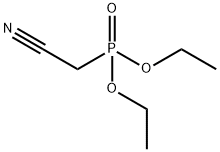

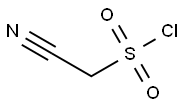
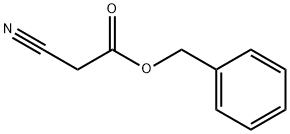


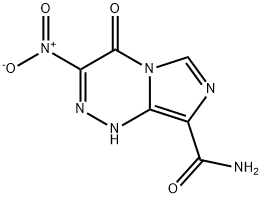

You may like
-
 Sodium cyanoborohydride 98%View Details
Sodium cyanoborohydride 98%View Details -
 Sodium cyanoborohydride CAS 25895-60-7View Details
Sodium cyanoborohydride CAS 25895-60-7View Details
25895-60-7 -
 Sodium cyanoborohydride 97% CAS 25895-60-7View Details
Sodium cyanoborohydride 97% CAS 25895-60-7View Details
25895-60-7 -
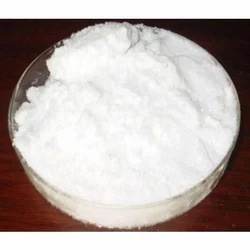 sodium cyanoborohydrideView Details
sodium cyanoborohydrideView Details
25895-60-7 -
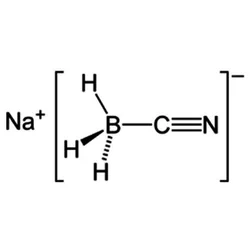 Sodium CyanoborohydrideView Details
Sodium CyanoborohydrideView Details
25895-60-7 -
 Sodium Cyanoborohydride Chemical PowderView Details
Sodium Cyanoborohydride Chemical PowderView Details
25895-60-7 -
 Sodium Cyanoborohydride, Packaging Type: Fibre Drums, Packaging Size: 25View Details
Sodium Cyanoborohydride, Packaging Type: Fibre Drums, Packaging Size: 25View Details
25895-60-7 -
 SODIUM CYANOBOROHYDRIDEView Details
SODIUM CYANOBOROHYDRIDEView Details
25895-60-7
